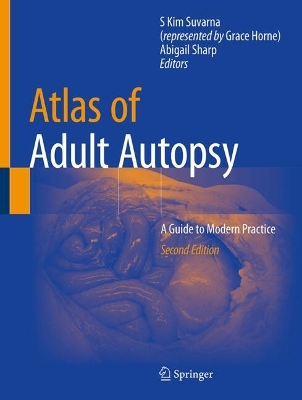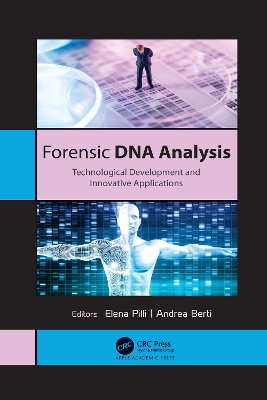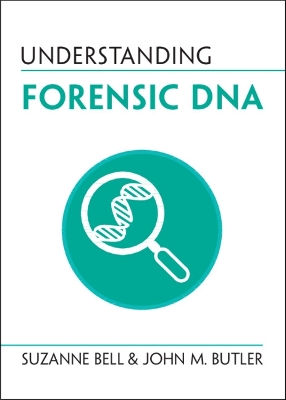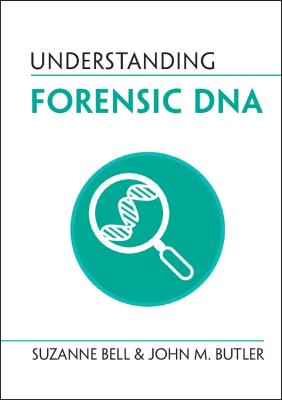Forensic Genetic Approaches for Identification of Human Skeletal Remains
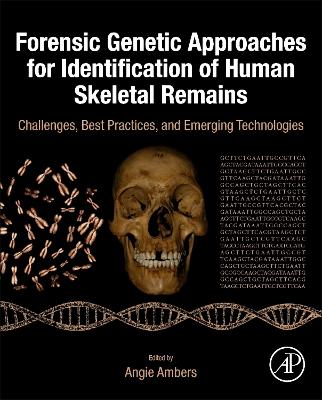 portes grátis
portes grátis
Forensic Genetic Approaches for Identification of Human Skeletal Remains
Challenges, Best Practices, and Emerging Technologies
Ambers, Angie
Elsevier Science Publishing Co Inc
11/2022
626
Dura
Inglês
9780128157664
15 a 20 dias
450
Descrição não disponível.
1. Missing persons and unidentified human remains: The world's silent mass disaster 2. Challenges in forensic genetic investigations of decomposed or skeletonized human remains: Environmental exposure, DNA degradation, inhibitors, and low copy number (LCN)
I. Guidelines and best practices for handling and processing human skeletal remains for genetic studies 3. Facilities design and workflow considerations for processing unidentified human skeletal remains 4. Location, recovery, and excavation of human remains for forensic testing 5. Skeletal microstructure, bone diagenesis, optimal sample selection, and pre-processing preparation techniques for DNA testing 6. DNA extraction methods for human skeletal remains 7. Quantitative and qualitative assessment of DNA recovered from human skeletal remains
II. Types of DNA markers and applications for identification 8. Autosomal short tandem repeat (STR) profiling of human 9. Y-chromosome analysis for unidentified human remains (UHR) investigations 10. Mitochondrial DNA and its use in the forensic analysis of skeletal material 11. X-chromosome short tandem repeats (X-STRs): Applications for human remains identification 12. Single nucleotide polymorphisms (SNPs): Ancestry-, phenotype-, and identity-informative SNPs 13. Diallelic Markers: INDELs and INNULs
III. Traditional platforms, alternative strategies, and emerging technologies for DNA analysis of human skeletal remains 14. Genotyping and sequencing of DNA recovered from human skeletal remains using capillary electrophoresis (CE) 15. Rapid DNA identification of human skeletal remains 16. Emerging technologies for DNA analysis of challenged samples
IV. Analysis of genetic data recovered from skeletonized human remains 17. Best practices in the development and effective use of a forensic DNA database for identification of missing persons and unidentified human remains 18. Software and database functionality for direct identification and kinship analysis: The Mass Fatality Identification System (M-FISys) 19. Bioinformatic tools for interrogating DNA recovered from human skeletal remains 20. The emerging discipline of forensic genetic genealogy
V. Complementary and multidisciplinary approaches to assist in identification of unidentified human skeletal remains 21. Forensic anthropology in a DNA world: How anthropological methods complement DNA-based identification of human remains 22. Generation of a personal chemical profile from skeletonized human remains 23. Forensic odontology: Historical perspectives and current applications for identification of human remains 24. Forensic facial reconstruction of skeletonized and highly decomposed human remains
I. Guidelines and best practices for handling and processing human skeletal remains for genetic studies 3. Facilities design and workflow considerations for processing unidentified human skeletal remains 4. Location, recovery, and excavation of human remains for forensic testing 5. Skeletal microstructure, bone diagenesis, optimal sample selection, and pre-processing preparation techniques for DNA testing 6. DNA extraction methods for human skeletal remains 7. Quantitative and qualitative assessment of DNA recovered from human skeletal remains
II. Types of DNA markers and applications for identification 8. Autosomal short tandem repeat (STR) profiling of human 9. Y-chromosome analysis for unidentified human remains (UHR) investigations 10. Mitochondrial DNA and its use in the forensic analysis of skeletal material 11. X-chromosome short tandem repeats (X-STRs): Applications for human remains identification 12. Single nucleotide polymorphisms (SNPs): Ancestry-, phenotype-, and identity-informative SNPs 13. Diallelic Markers: INDELs and INNULs
III. Traditional platforms, alternative strategies, and emerging technologies for DNA analysis of human skeletal remains 14. Genotyping and sequencing of DNA recovered from human skeletal remains using capillary electrophoresis (CE) 15. Rapid DNA identification of human skeletal remains 16. Emerging technologies for DNA analysis of challenged samples
IV. Analysis of genetic data recovered from skeletonized human remains 17. Best practices in the development and effective use of a forensic DNA database for identification of missing persons and unidentified human remains 18. Software and database functionality for direct identification and kinship analysis: The Mass Fatality Identification System (M-FISys) 19. Bioinformatic tools for interrogating DNA recovered from human skeletal remains 20. The emerging discipline of forensic genetic genealogy
V. Complementary and multidisciplinary approaches to assist in identification of unidentified human skeletal remains 21. Forensic anthropology in a DNA world: How anthropological methods complement DNA-based identification of human remains 22. Generation of a personal chemical profile from skeletonized human remains 23. Forensic odontology: Historical perspectives and current applications for identification of human remains 24. Forensic facial reconstruction of skeletonized and highly decomposed human remains
Este título pertence ao(s) assunto(s) indicados(s). Para ver outros títulos clique no assunto desejado.
Forensic Genetics; Skeletal Remains; DNA Extraction; STRs; SNPs; Kinship Analysis; Pathological Conditions; Forensic Odontology
1. Missing persons and unidentified human remains: The world's silent mass disaster 2. Challenges in forensic genetic investigations of decomposed or skeletonized human remains: Environmental exposure, DNA degradation, inhibitors, and low copy number (LCN)
I. Guidelines and best practices for handling and processing human skeletal remains for genetic studies 3. Facilities design and workflow considerations for processing unidentified human skeletal remains 4. Location, recovery, and excavation of human remains for forensic testing 5. Skeletal microstructure, bone diagenesis, optimal sample selection, and pre-processing preparation techniques for DNA testing 6. DNA extraction methods for human skeletal remains 7. Quantitative and qualitative assessment of DNA recovered from human skeletal remains
II. Types of DNA markers and applications for identification 8. Autosomal short tandem repeat (STR) profiling of human 9. Y-chromosome analysis for unidentified human remains (UHR) investigations 10. Mitochondrial DNA and its use in the forensic analysis of skeletal material 11. X-chromosome short tandem repeats (X-STRs): Applications for human remains identification 12. Single nucleotide polymorphisms (SNPs): Ancestry-, phenotype-, and identity-informative SNPs 13. Diallelic Markers: INDELs and INNULs
III. Traditional platforms, alternative strategies, and emerging technologies for DNA analysis of human skeletal remains 14. Genotyping and sequencing of DNA recovered from human skeletal remains using capillary electrophoresis (CE) 15. Rapid DNA identification of human skeletal remains 16. Emerging technologies for DNA analysis of challenged samples
IV. Analysis of genetic data recovered from skeletonized human remains 17. Best practices in the development and effective use of a forensic DNA database for identification of missing persons and unidentified human remains 18. Software and database functionality for direct identification and kinship analysis: The Mass Fatality Identification System (M-FISys) 19. Bioinformatic tools for interrogating DNA recovered from human skeletal remains 20. The emerging discipline of forensic genetic genealogy
V. Complementary and multidisciplinary approaches to assist in identification of unidentified human skeletal remains 21. Forensic anthropology in a DNA world: How anthropological methods complement DNA-based identification of human remains 22. Generation of a personal chemical profile from skeletonized human remains 23. Forensic odontology: Historical perspectives and current applications for identification of human remains 24. Forensic facial reconstruction of skeletonized and highly decomposed human remains
I. Guidelines and best practices for handling and processing human skeletal remains for genetic studies 3. Facilities design and workflow considerations for processing unidentified human skeletal remains 4. Location, recovery, and excavation of human remains for forensic testing 5. Skeletal microstructure, bone diagenesis, optimal sample selection, and pre-processing preparation techniques for DNA testing 6. DNA extraction methods for human skeletal remains 7. Quantitative and qualitative assessment of DNA recovered from human skeletal remains
II. Types of DNA markers and applications for identification 8. Autosomal short tandem repeat (STR) profiling of human 9. Y-chromosome analysis for unidentified human remains (UHR) investigations 10. Mitochondrial DNA and its use in the forensic analysis of skeletal material 11. X-chromosome short tandem repeats (X-STRs): Applications for human remains identification 12. Single nucleotide polymorphisms (SNPs): Ancestry-, phenotype-, and identity-informative SNPs 13. Diallelic Markers: INDELs and INNULs
III. Traditional platforms, alternative strategies, and emerging technologies for DNA analysis of human skeletal remains 14. Genotyping and sequencing of DNA recovered from human skeletal remains using capillary electrophoresis (CE) 15. Rapid DNA identification of human skeletal remains 16. Emerging technologies for DNA analysis of challenged samples
IV. Analysis of genetic data recovered from skeletonized human remains 17. Best practices in the development and effective use of a forensic DNA database for identification of missing persons and unidentified human remains 18. Software and database functionality for direct identification and kinship analysis: The Mass Fatality Identification System (M-FISys) 19. Bioinformatic tools for interrogating DNA recovered from human skeletal remains 20. The emerging discipline of forensic genetic genealogy
V. Complementary and multidisciplinary approaches to assist in identification of unidentified human skeletal remains 21. Forensic anthropology in a DNA world: How anthropological methods complement DNA-based identification of human remains 22. Generation of a personal chemical profile from skeletonized human remains 23. Forensic odontology: Historical perspectives and current applications for identification of human remains 24. Forensic facial reconstruction of skeletonized and highly decomposed human remains
Este título pertence ao(s) assunto(s) indicados(s). Para ver outros títulos clique no assunto desejado.


